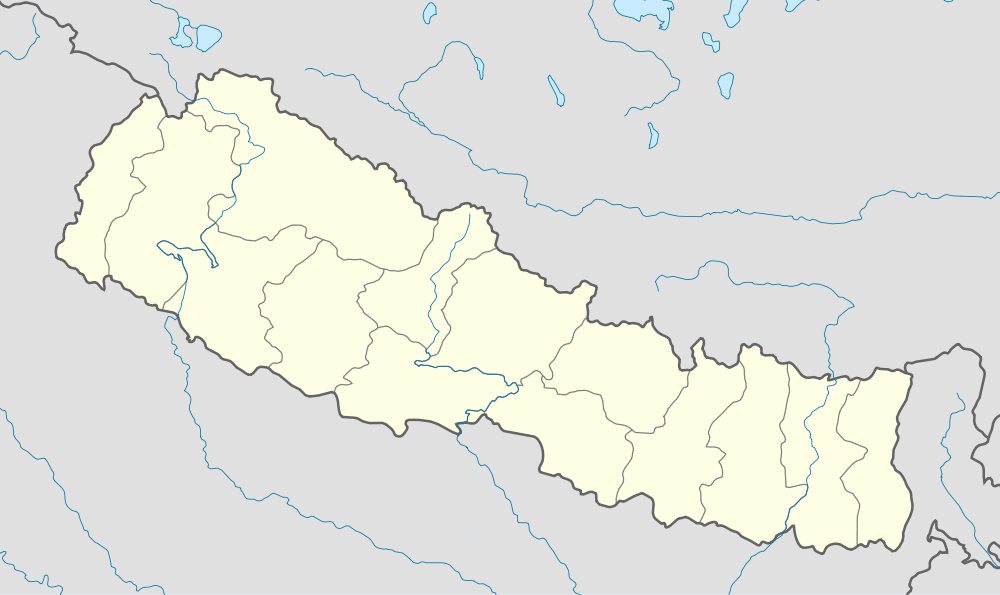Katahari
| Katahari कटहरी katahari is | |
|---|---|
| Village development committee | |
 Katahari Location in Nepal | |
| Coordinates: 26°28′N 87°19′E / 26.47°N 87.32°ECoordinates: 26°28′N 87°19′E / 26.47°N 87.32°E | |
| Country |
|
| Zone | Koshi Zone |
| District | Morang District |
| Population (1991) | |
| • Total | 18,782 |
| Time zone | Nepal Time (UTC+5:45) |
Katahari is a village development committee in Morang District in tKoshi Zone]] of south-eastern Nepal. At the time of the 1991 Nepal census it had a population of 18782.[1]
It lies immediately to the east of Biratnagar, and the western parts of the VDC are semi-urban, although the remainider is rural, home to a number of self-contained villages off the main road. People from different castes live here.They are Das,Kamats,Rajbanshi,Yadavs,Doms,Dushads,Musahars,Satars,Jhangars,Haluwais,Shahs,Musalmans,Mandals,Singh's,mother tongue of Nepalese languages castes etc.Mostly Hinduism and Islam followed by people here but newly adopted Christians by few backward people are also seen.Bhaudaha,Sisvani Jahada,Kadmaha etc are neighbouring VDCs.A number of factories,petrol pumps,temples,schools are here.Katahari is orally nominated for municipality but procedures are taking for a complete planned municipality. Katahari lies in the smaller industrial belt of Biratnagar, with a number of agricultural processing factories lining the road towards Rangeli. Katahari bazaar and Naya Bazaar to the east are important agricultural trade centres for the ethnically diverse farming population of south-west Morang. A large Haatiya (weekly market) is held in Naya Bazaar and on the bank of Singhya river twice a week. The lands on either side of the Lohandra are fertile, and very suitable for vegetable cultivation, supplying Biratnagar's central vegetable markets.Rangeli Road which is linked to Rangeli in the east and Biratnagar in the west passes through Katahari.Katahari's people love and respect their culture, tradition ,norms and value.
References
- ↑ "Nepal Census 2001". Nepal's Village Development Committees. Digital Himalaya. Archived from the original on October 12, 2008. Retrieved 18 December 2008.
